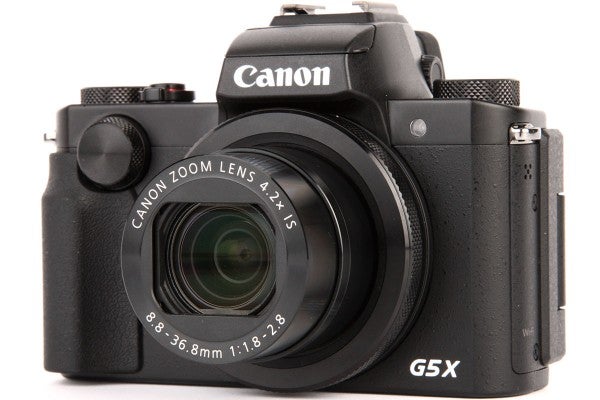With a wealth of physical controls, the Canon PowerShot G5 X is aimed squarely at the enthusiast photographer. Callum McInerney-Riley tests it out
Canon PowerShot G5 X review
LCD and viewfinder

The 3″ screen is touch sensitive and fully articulated
One of the biggest areas in which the G5 X distinguishes itself from the competition is in the LCD and viewfinder combination. The 2.36-million-dot electronic viewfinder gives impressive resolution, colour accuracy, contrast and refresh rate, but the most interesting point about the EVF is its positioning.
Increasingly more compact cameras try to cram in a viewfinder somewhere, so users have an alternative to the LCD. This usually means the viewfinder is small and positioned on the far left of the camera. This can make it awkward to use, and any eyecup – if it exists at all – is so small it can allow light to ingress, making visibility poor in certain conditions.
Canon has placed a large EVF directly over the lens, making it the centrepiece of the design. This placement does increase the size of the camera, but it also adds to the DSLR-like feel that Canon is aiming to achieve. I found myself using the EVF far more than I did the LCD, and having used many compact cameras this is the first time I’ve defaulted to the viewfinder rather than it being my second choice.
All the information a user is likely to need is displayed in the viewfinder. One really neat feature is that if the camera is turned to portrait format, all the information flips around with it – a feature that’s usually reserved for high-end CSCs.
There’s also a seriously good LCD panel on the G5 X. This 3in, 1.04-million-dot touchscreen is one of the highest-specification screens we’ve seen on a compact camera. Being fully articulated, it can be used to shoot from high or low vantage points, as well as being able to shoot at arm’s length. I found the touchscreen also improved the handling of the camera. Most notably, I love the ability to use single point AF and simply assign the focus point using the touchscreen. It was handy to launch the quick menu on-screen and touch whatever setting I wanted to change, without having to mess around with a D-pad to navigate to certain options.
There’s a range of information on the different shooting screens of the G5 X, but the most interesting for enthusiast photographers is the live histogram and the automatic level gauge provided by a built-in gyroscopic sensor. This provides very useful information for the more discerning photographer.






